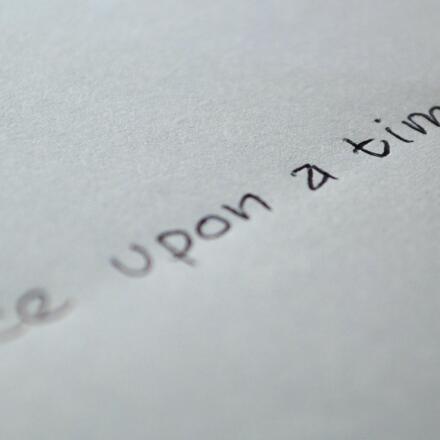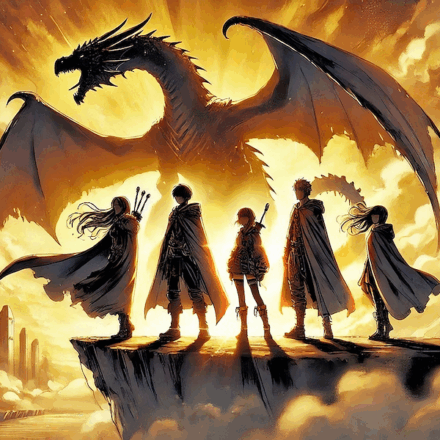Are you planning a one-shot session for a convention game, or perhaps as a break from your regular campaign? Here is an easy to remember framework that you can start with to prepare a four hour game.
1 — The Villain
You need a villain, and since this is a one-shot your villain needs to be over the top. An evil wizard tormenting the townspeople is not going to cut it. You need an evil wizard who is stealing the townspeople’s babies from them in the middle of the night.
The aim is not to shock your players just for the sake of shocking your players. Leave that to the tabloids and bad horror movies. The goal is to introduce something just vile enough that your players want to pursue that horrible menace and bring it to justice. Since this is a one-shot you want to avoid ambiguous situations. Make the point of the session obvious: The PCs need to get the bad guy.
2 — The Peers
Noteworthy villains are going to have enemies and rivals, and those are the second part of the framework. You want to have two peers to the villain for the purpose of further defining the villain with other characters. By contrasting and comparing the villain with some peers we give the PCs more incentive to get the bad guy.
The first peer is the opponent. If the villain is an outlaw gunslinger the opponent is the local sheriff. The purpose of the opponent is to demonstrate how evil the villain is by giving the players an opposite to compare the villain against. The sheriff is a good and decent person, and she should be a shining example of law and order.
The second peer is the rival. Again, if the villain is an outlaw gunslinger the rival might be a another criminal such as a cheating gambler. The rival is not a hero, but the rival is not as despicable as the villain is. The rival is used to help reinforce just how awful the villain is. The rival is bad, but the villain is worse, and the villain is so bad that the rival becomes an unlikely ally in taking him down.
3 — The Encounters
Now it is time to plan out the session using the villain and the peers in a series of three encounters.
- We introduce the villain and the opponent. Ideally the villain is about to defeat his opponent, or get away with a major crime against her. The PCs just happen to arrive at the perfect moment to intervene. If the villain does not get away from the PCs he is demoted behind the scenes to the villain’s favorite henchman.
- Following a lead from the villain’s opponent the PCs next encounter the villain’s rival. If the PCs defeat the rival they learn from him more details about the villain’s big evil plan.
- The PCs encounter the now fully prepared villain in a fight to the finish! Winner takes all, and the fate of the village/city/nation/planet hangs in the balance!
These are just the basic concepts behind each encounter. Feel free to enhance them with other dramatic elements like a ticking time bomb that needs to be defused, exotic locations for the encounter (rope bridge, volcano, etc.), or an unexpected threat to both the PCs and the villain such as a sleeping dragon that is awaken and does not *ahem* appreciate it.
Frameworks are Starting Points
While the overall plot that this framework presents is simple you can easily adjust it with one or two simple changes to create much more dynamic and interesting sessions. A little creativity and a willingness to play with the framework can result in some great one-shot ideas.
What if the villain’s opponent is the actual villain and she was working with the rival all along to dupe some do-gooders into doing her dirty work? Maybe the villain is a misunderstood hero who has been on the trail of the real evil plaguing the land, and everyone just assumed he was the cause of all of their woes.
Whether you use the framework as it is, adjust it, or simply refer to it as a baseline while improvising does not matter. As long as your group is enjoying the one-shot session you are on the right track. Consider the framework to be merely a catalyst for your own imagination to work off of.
What do you think of the 1-2-3 one-shot framework? Do you use frameworks in designing sessions for your game? Share your experiences and ideas with the rest of us by leaving a comment below!

















Great idea, Patrick! I’ve had the trouble of getting the PCs to go after the villain in one-shots before. And I also felt that there wasn’t enough time to describe just how evil the villain was within the time constraints of a one-shot. I just wanted the PCs to go get ’em! The rival is the perfect answer to that. This article has just been bookmarked for my next one-shot. Thanks!
This is really good succinct advice. Great Job. I really like how easily this can be used, it can dropped into a campaign almost any time.
@hattymchappy – I’m glad that you found something to use in your next one-shot. Please let us know how it works out for you. I’m especially interested in any tweaks that you apply to the framework. 🙂
@Razjah – Thanks! I’ve used this framework on more than one occasion myself as a drop in session for my campaigns.
Very, very useful advice. My one-shots always suffer from having way too much story packed in. They run past the allotted time and feel like a grind through the last third. It would be easy to generate variations on the individual roles while retaining the simplicity of elements and encounters, too. Tasty!
@mcmanlypants – You got it! The roles do not have to be villain, opponent, and rival. I do suggest that the roles be along the lines of an antagonist for the PCs, something that contrasts that antagonist, and something similar to the antagonist but with a key difference.
So you could use this framework to have a non-traditional antagonist such as killer bees. The PCs arrive to see a group of people overrun by a swarm of killer bees. The PCs help save the group of people and discover that they are scientists trying to get rid of the killer bees. The scientists tell the PCs about how they hope to introduce larvae from other bee colonies into the larger killer bee hives in order to introduce a hybrid that will wipe out the killer bees. The key difference is that these bees do not attack unless provoked, and getting a sample of their larvae will provoke them. The PCs get the larvae sample at great risk to themselves and then have the big showdown when they attempt to introduce them into the killer bees’ hive.
Not a traditional RPG session for sure, and maybe not an appealing one. Yet it uses the framework. Plus change a few details like instead of killer bees the antagonists are rogue nanobot technology that has developed intelligence, and then place the whole session “IN SPACE!!!” and you got yourself a nice little one-shot to run with. 🙂
Great article. Reading it reminded me I needed to buy Masks and I happened to have enough change in the couch cushions this week, so I splurged.
So, you going to Gen Con 2012, and can I get on a Fudge game with you?
@kwixson – Thank you for purchasing Masks! I hope that it serves you well and that what you get out of it is worth far more than what you spent on it. All of us who worked on it did so with the mission of making a GM’s role easier to fulfill.
I am not planning to attend Gen Con this year. Then again, last year I was not planning to do so but ended up going to run games per fans’ requests. You never know!
I will be running some games soon online via Google + Hangout using the West End Game Open D6 system. Those games will be announced here once I am ready to go.